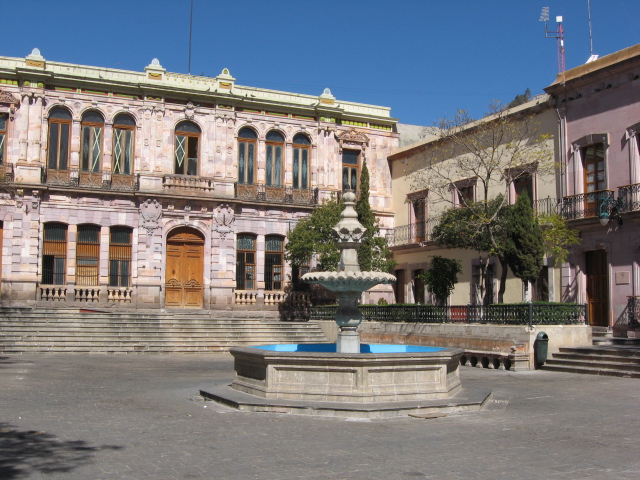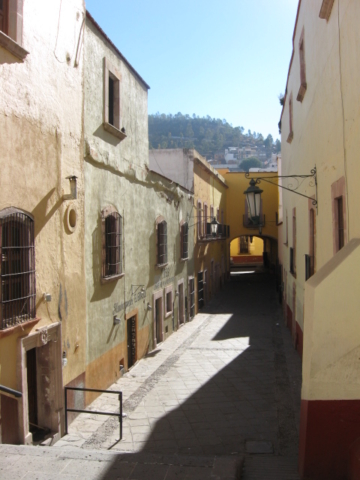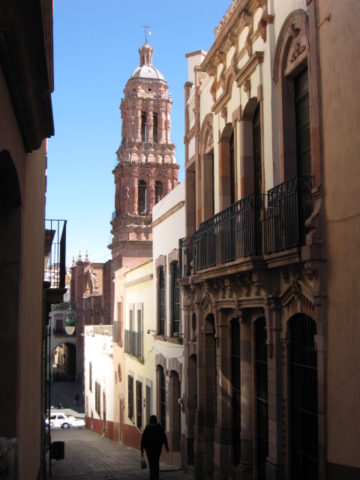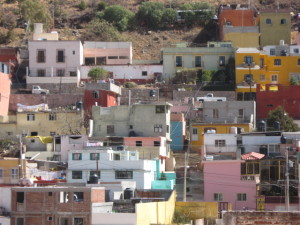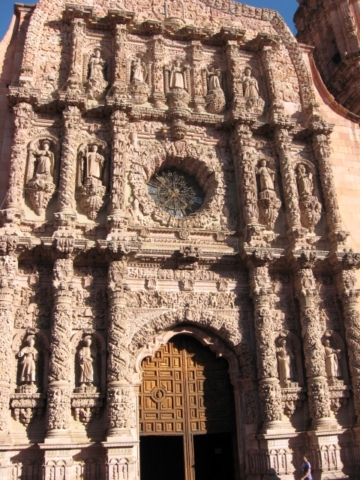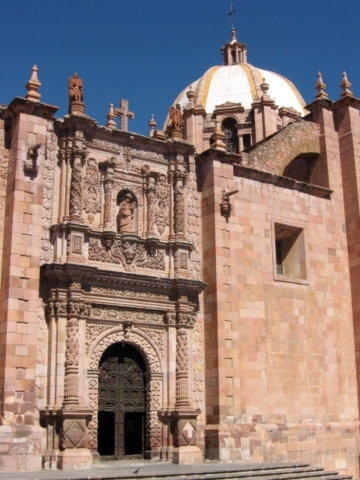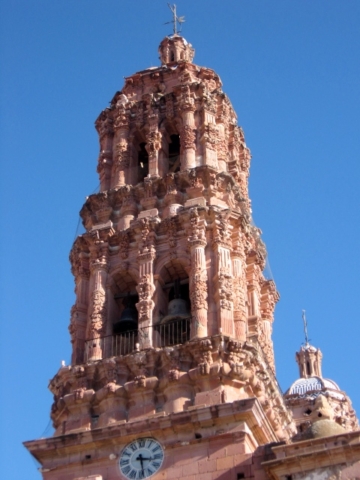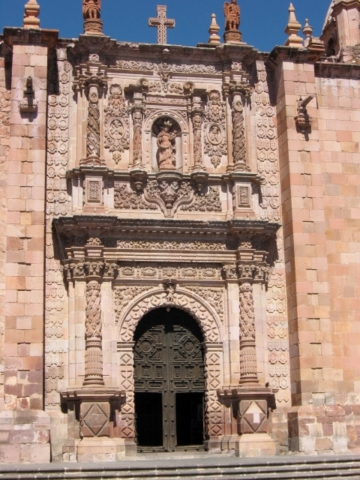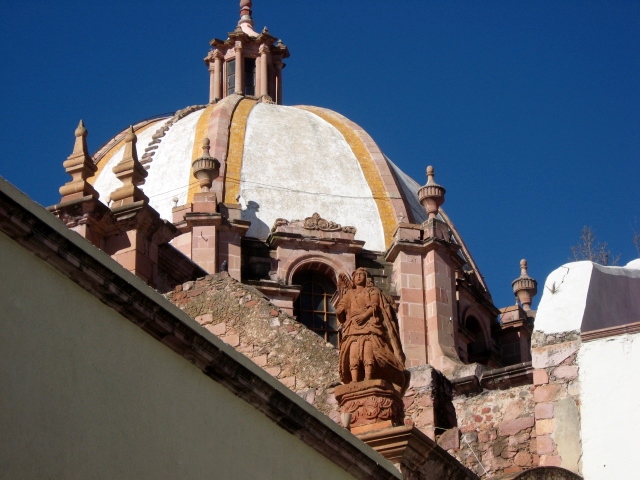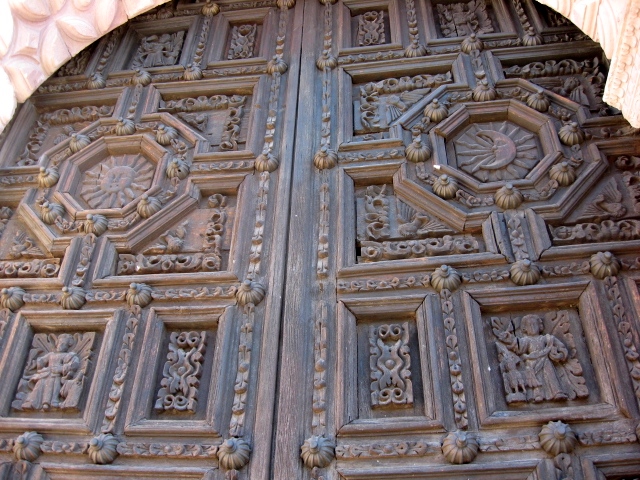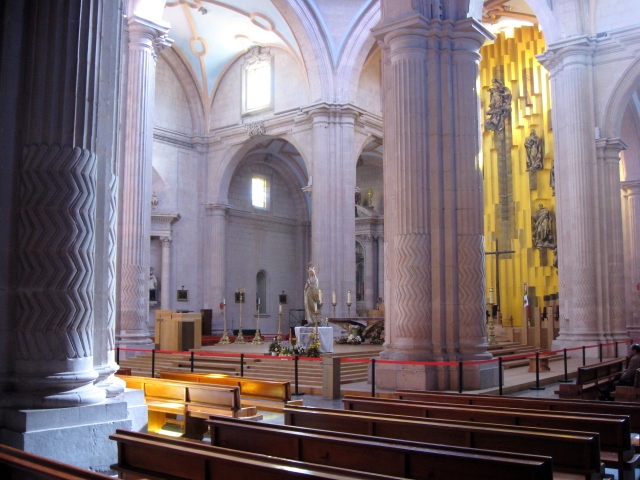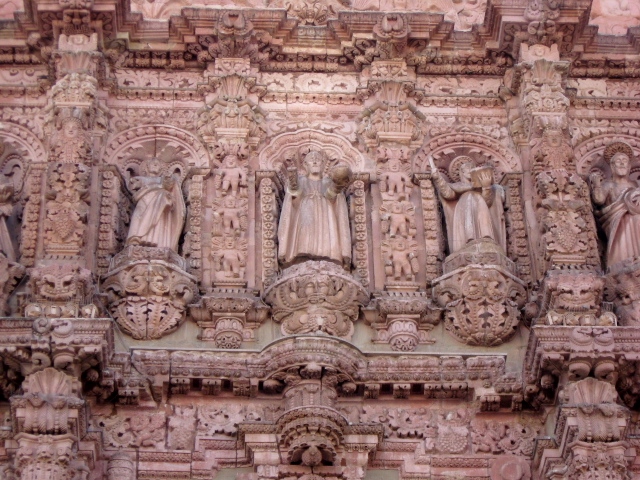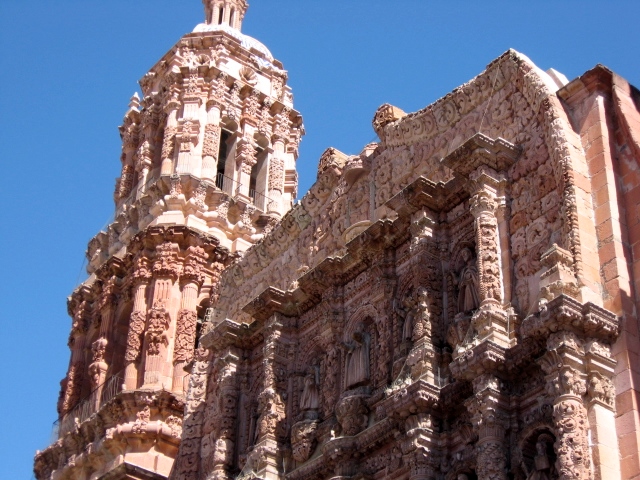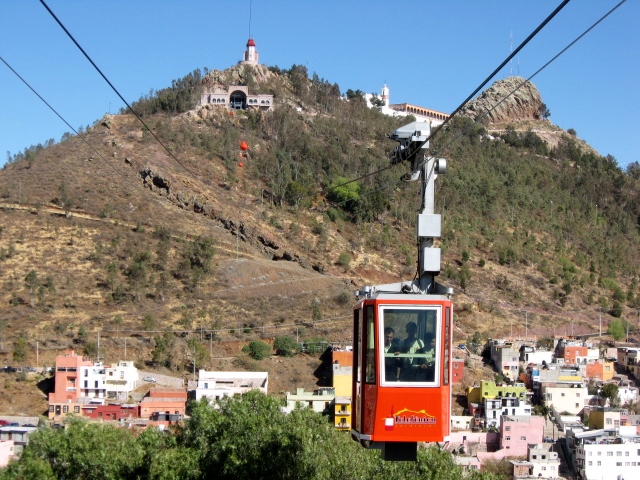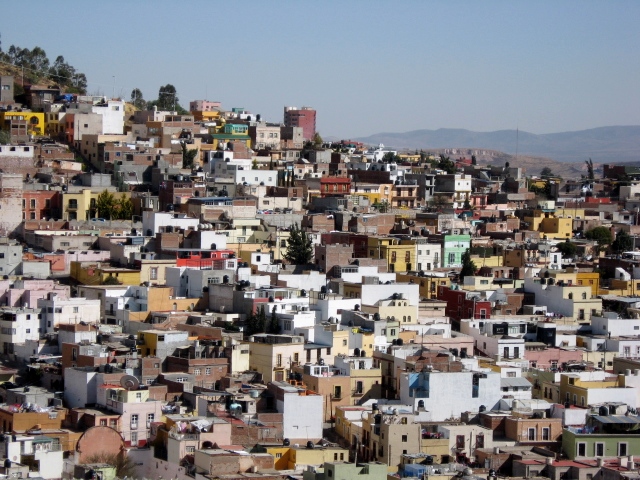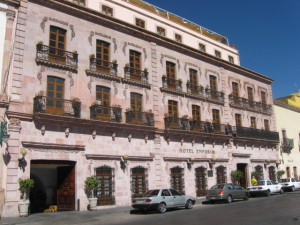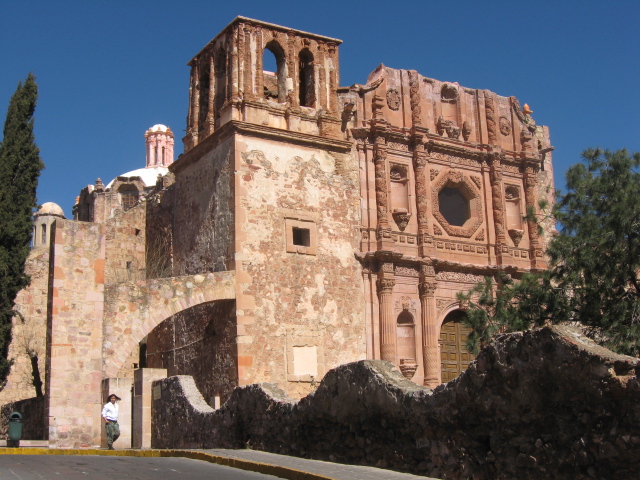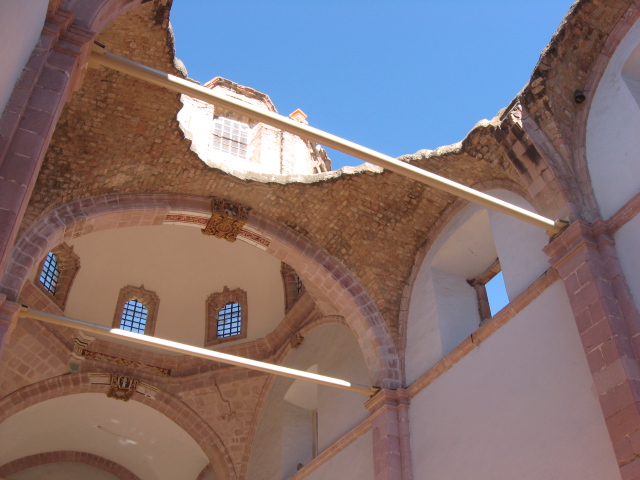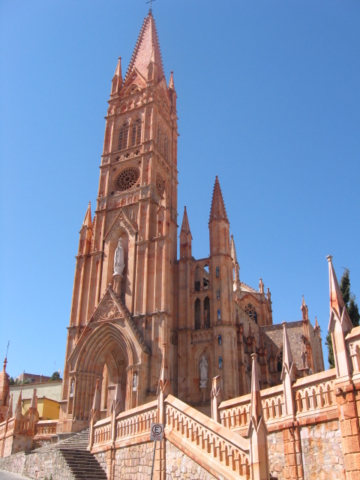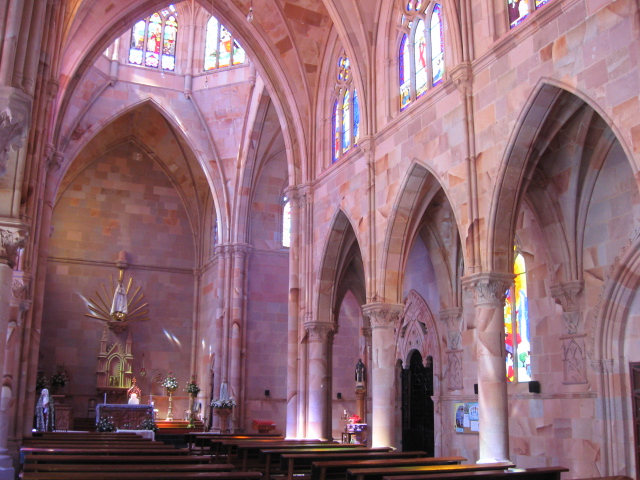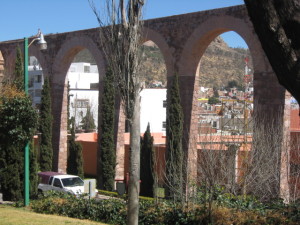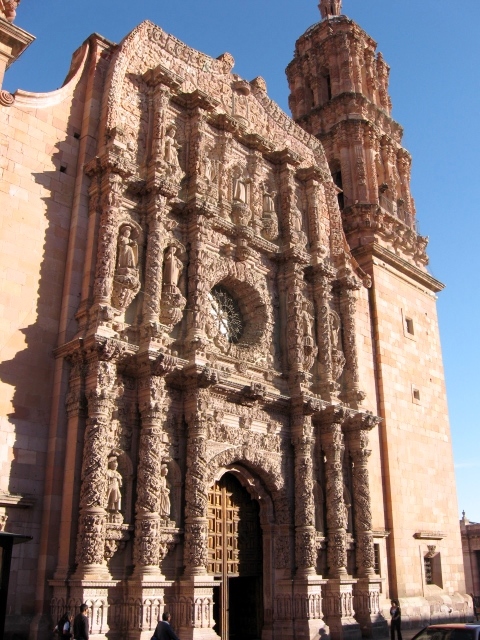
Updated July 2022

Millions of tourists visit Mexico yearly, mainly in the winter, as people like to escape the freezing temperatures and snow in the north. Almost all of these people visit the tourist cities of Cancun, Cabo San Lucas, Puerto Vallarta and a few others. These places are lovely, but to really see Mexico, you have to get off the beaten path and visit some of the areas that tourists seldom visit. One of these places is the marvellous city of Zacatecas.
Zacatecas is located in north-central Mexico. Central Mexico is not warm in the winter like the coastal tourist resorts, which is one reason people don’t go there. The average daytime temperature is about 10 to 13 degrees C (52 to 54 F) which is fine with a light jacket.
Accommodations
When I travel, I usually go camping or stay at budget hotels. These hotels in Mexico cost about $40 per night for two people. You get a nice, clean, plain room in an older building for this price. Like most budget hotels in Mexico, they are unheated, and there is sometimes a shortage of hot water. (The hotels in the tourist areas are better but much more expensive. I guess the saying is true: you get what you pay for.) The temperature at night is about 5C (41F), but it was warm enough under several thick blankets.
Pastel Colours and Cobblestone Streets
The first thing that I noticed about Zacatecas is the colours. Most of the houses and buildings show off their pretty pastel colours. Most Mexican cities have many grey buildings of unpainted concrete or cinder blocks. When painted, the concrete houses can be beautiful. However, in Monterrey and Mexico City, most of those painted are in dull colours. Zacatecas looks like a painter’s palette of pretty colours.
El Centro (city centre) is a maze of narrow, winding, cobblestone streets. Most are just wide enough for one vehicle and, by necessity, are one-way streets. Some are too narrow for even a single vehicle. Zacatecas is very hilly, and the road you are travelling on might suddenly rise uphill so steeply that it turns into a stairway.
Zacatecas got its start as a Spanish mining town in the 1500s. The mines produced a great deal of silver, and the town and its inhabitants became very wealthy. This explains the elaborate cathedral, many mansions, theatres, and other significant buildings. As a result, Zacatecas become the second most important city in Mexico, after Mexico City. But the mines closed in 1960 when the silver ran out and its importance faded.
The Pink Cathedral
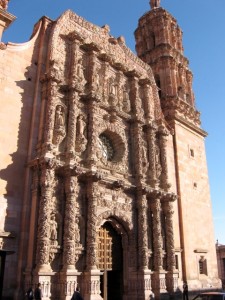 Not many tourists go to Zacatecas. So they are missing out on a beautiful place. The whole centre of the city is a UN Heritage Site. The city is filled with marvellous historic buildings and a magnificent and detailed Cathedral.
Not many tourists go to Zacatecas. So they are missing out on a beautiful place. The whole centre of the city is a UN Heritage Site. The city is filled with marvellous historic buildings and a magnificent and detailed Cathedral.
The pink sandstone Cathedral of Our Lady of the Assumption of Zacatecas has intricate carvings from top to bottom. The quantity and detail of the carvings are truly incredible. They might remind you of a delicate, lace doily, carved in stone. Construction was begun in 1729 and was completed in 1752. It is the most outstanding example of baroque art in Mexico.
Words are not sufficient to describe it, so I will say no more. Just look at the photos.
Click photos to enlarge.
As the sun is quite bright during the day, it is best to photograph the cathedral after 2:30 p.m.
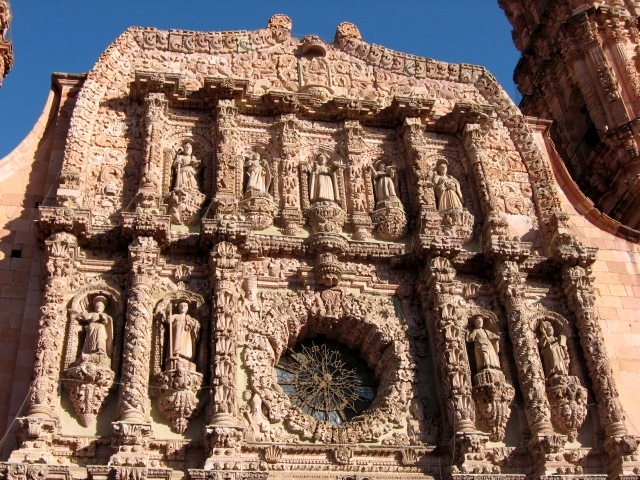
Cablecar
The area around Zacatecas consists of barren mountains. There are few trees. One mountain has a cable car that goes up 650 metres (711 yards) to the top of Cerro de la Bufa. This trip offers panoramic views of the city, with its patchwork of pretty colours.
At the top of the mountain is a church built in 1728. Next to the church is a plaza that is dedicated to the Mexican Revolution. There are statues of Pancho Villa and other revolutionaries and a museum. Mexico won independence from Spain in 1821, but for the following 100 years, there were a series of coups, revolutions and foreign invasions. During one revolution to overthrow the government, a battle took place at Zacatecas on 23 June 1914 by a battalion of rebels under the leadership of Pancho Villa. The rebels won the battle, and the government forces retreated toward Mexico City.
The church and museum are interesting, but the spectacular view is the main attraction.
Other buildings and sights
In addition to the cathedral are several beautiful churches. The churches are the buildings with the most detail and beauty, but every street is full of lovely sights. While walking from one church to the next, we saw many wonderful historic buildings and monuments. For example, near our hotel is the stature of the Angel of Independence. A smaller version of the one in Mexico City to commemorate Mexico’s independence from Spain.
Beside the cathedral is a building that used to be the mercado (market) built in 1889, but is now filled with stores. On the other side of the cathedral is the Plaza de Armes, a picturesque area which contains the town hall, the governor’s house, a pretty little fountain and several mansions. In the plaza is a building with a tunnel through it to the next street. Across the street from the plaza is a beautiful hotel called the Emporio.
A little further down the street is the Calderon Theatre, which opened in 1897. Before television, the theatre had live performances and was one of the few types of entertainment in those days.
Next we came to the church of San Francisco de Zacatecas. It was built in 1567. It was destroyed by fire in 1648 and was never repaired. In 1924 the roof caved in.
The Temple of Fatima
Outside the downtown area is the beautiful pink sandstone church called the Temple of Fatima. I like this one the best after the cathedral. I like the tall spires that remind me of a romantic castle. The different shades of pink make a fascinating contrast. This church is relatively new compared to the others in the city. Work began in 1950, but due to a lack of funds and building material, it was not completed until 2000.
Not far from Fatima is an ancient aqueduct, more than 250 years old, that was once used to bring water from the mountains into the city. It was in use until 1910. It was initially about three km long, but now only about 300 metres remain.
We walked back downtown again to see another lovely church called Santo Domingo, built between 1746 and 1749. Next to the church is a building that was originally a prison but is now an art gallery.
Summary
Zacatecas is a beautiful gem of a city filled with historic and wonderfully designed buildings. Due to the hills, it was impossible to lay the streets in a straight line. The narrow, winding, dead-end cobblestone streets add to the city’s charm.
We toured the city in one day, but we had to walk the whole day to do so. You need two days here to have a leisurely tour of the city. We didn’t have time to visit any of the many museums. It is a beautiful place, but few tourists come here. Probably because of its remote location in the centre of northern Mexico and the cold. Tourists like to go to warm places. In the morning, my fingers became numb from the cold while taking photos. It does not warm up until after midday. I am delighted that I came here. I think it is the most beautiful city in Mexico.
You can get to Zacatecas easily by bus from Mexico City, Puerto Vallarta, Mazatlan, or Guadalajara. Once there, most of the sights can be reached on foot, but a taxi will be required for a few places. The city is very safe, although crime can happen any place in the world. I recommend you get off the beaten path and include wonderful Zacatecas in your visit to Mexico.
